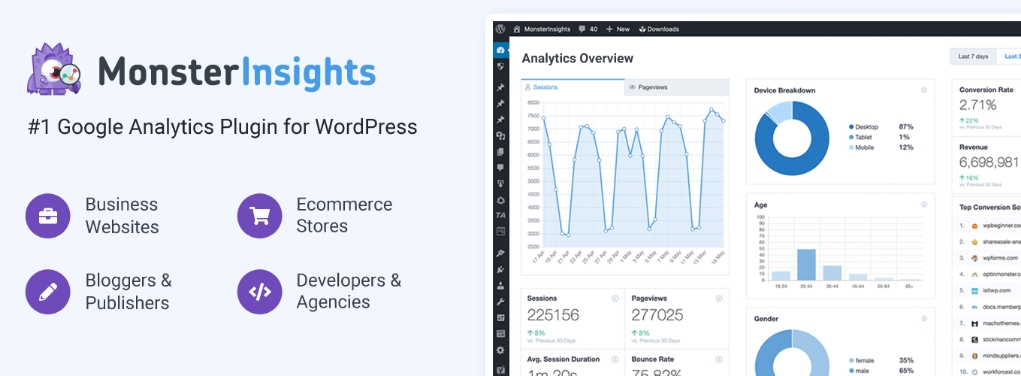In the ever-evolving landscape of web development, a new architectural approach has emerged, promising to change the way we build and deploy websites and web applications. This innovative, known as Jamstack, has gained significant traction in recent years, attracting developers from all walks of life who seek to create high-performing, secure, and scalable digital experiences.
But what exactly is Jamstack, and why should you consider it for your next web project? In this comprehensive guide, we'll dive deep into the world of Jamstack, exploring its core principles, benefits, and real-world applications. Buckle up and get ready to embark on a journey that will transform the way you think about web development.
What is Jamstack?
Jamstack is an acronym that stands for JavaScript, APIs, and Markup. It's a modern web architecture that decouples the front-end (client-side) from the back-end (server-side) by leveraging static site generation, client-side JavaScript, and third-party APIs or services.
In a traditional web development approach, server-side code (e.g., PHP, Ruby on Rails, or Node.js) generates HTML pages dynamically, often pulling data from a database and rendering it server-side before sending the complete page to the client's web browser. This approach, while widely adopted, can introduce performance bottlenecks, scalability challenges, and security risks, especially as the complexity of web applications increases.
Jamstack, on the other hand, takes a different approach. Instead of generating pages dynamically at runtime, Jamstack builds static HTML, CSS, and JavaScript files during the build process. These pre-rendered files are then deployed to a Content Delivery Network (CDN) or a static web host, where they can be served directly to the client's browser without the need for server-side rendering.
When the user interacts with the website or application, client-side JavaScript handles any dynamic behavior, such as fetching data from third-party APIs, updating the user interface, or handling form submissions. This decoupling of the front-end and back-end allows for greater scalability, better performance, and improved security, as we'll explore in more detail later.
Benefits of Jamstack
Jamstack offers a myriad of benefits that make it an attractive choice for modern web development projects. Here are some of the key advantages:
1. Performance and Scalability: By serving pre-rendered static files from a CDN or a static web host, Jamstack websites and applications can achieve lightning-fast load times and handle high traffic volumes without the need for expensive server infrastructure.
2. Security: Since Jamstack sites are built with static files and don't rely on server-side code execution, they are less susceptible to common web vulnerabilities like SQL injection, cross-site scripting (XSS), and server-side code vulnerabilities. This greatly reduces the attack surface and makes Jamstack applications more secure by design.
3. Developer Experience: Jamstack simplifies the development workflow by separating concerns between the front-end and back-end. Developers can focus on building a great user interface with modern JavaScript frameworks like React, Vue, or Svelte, while leveraging third-party APIs and services for dynamic functionality.
4. Portability and Versioning: Jamstack projects are typically hosted on a Git-based platform like GitHub, GitLab, or Bitbucket, making it easy to version control, collaborate, and deploy updates to the live site or application.
5. Reduced Operational Complexity: With Jamstack, you don't need to worry about managing and scaling complex server infrastructure. The static files can be deployed to a simple and cost-effective hosting solution, reducing the operational overhead and allowing you to focus on building great products.
6. Offline Capabilities: Jamstack applications can leverage Service Workers, a client-side technology that enables offline experiences, caching, and push notifications, delivering a more robust and engaging experience for users, even in low or no-connectivity scenarios.
7. Tight Integration with Modern Tooling: Jamstack aligns well with modern development practices and tools, such as Continuous Integration/Continuous Deployment (CI/CD), static site generators (e.g., Gatsby, Next.js, Nuxt.js), headless Content Management Systems (CMSs), and cloud-based serverless functions.
How Jamstack Works
Now that we've explored the benefits of Jamstack, let's dive deeper into how it works under the hood.
1. Static Site Generation: The foundation of Jamstack is static site generation. During the build process, a static site generator takes your source files (e.g., Markdown, React components, etc.) and generates a set of static HTML, CSS, and JavaScript files. This process is often referred to as "pre-rendering" or "build-time rendering."
2. Client-Side JavaScript: While the initial page load serves static files, client-side JavaScript is responsible for handling any dynamic behavior or interactions on the website or application. This includes fetching data from APIs, updating the user interface, handling form submissions, and more.
3. Third-Party APIs and Services: Jamstack embraces the concept of "baking in" dynamic functionality through third-party APIs and services. Instead of building complex server-side logic, Jamstack applications leverage external APIs and services to handle tasks like authentication, databases, file storage, serverless functions, and more.
4. Deployment and Hosting: After the static files are generated, they can be deployed to a CDN or a static web host like Netlify, Vercel, or AWS Amplify, which are optimized for serving static content quickly and efficiently. Many Jamstack hosting providers also offer seamless integration with Git-based platforms, making it easy to deploy updates with every commit.
5. Continuous Integration and Continuous Deployment (CI/CD): Jamstack projects often incorporate CI/CD pipelines, which automatically build, test, and deploy your application whenever changes are pushed to the repository. This streamlined process ensures that your site or application is always up-to-date and available to users.
READ ALSO:
Jamstack in Action: Real-World Examples
To better understand Jamstack in practice, let's explore some real-world examples of websites and applications that have successfully adopted this modern architecture.
1. Smashing Magazine (smashingmagazine.com)
Smashing Magazine, a renowned online publication for web developers and designers, migrated to a Jamstack architecture in 2020. They chose to build their new website using Gatsby, a React-based static site generator, and GraphQL for fetching data from various sources, including their content management system (CMS).
By embracing Jamstack, Smashing Magazine was able to achieve significant performance improvements, with their website loading in under a second on average. The team also reported a better developer experience, as the separation of concerns between the front-end and back-end allowed them to focus on building a great user interface and leveraging the power of React.
2. Figma (figma.com)
Figma, a leading collaborative design tool, has built a Jamstack-powered marketing website using Next.js, a React-based framework for building server-side rendered and static websites. By leveraging Jamstack principles, Figma's marketing site benefits from lightning-fast load times and a smooth user experience, even with its content-heavy pages.
3. Hashnode (hashnode.com)
Hashnode, a popular blogging platform for developers, is another excellent example of a Jamstack-powered application. Built using Gatsby and relying on serverless functions and APIs for dynamic functionality, Hashnode provides a fast and responsive experience for both writers and readers. The team at Hashnode has also reported significant improvements in development workflow, scalability, and performance since adopting Jamstack.
4. Nozzle (nozzle.ai)
Nozzle.ai is a platform that empowers creators to build, deploy, and monetize web applications without writing code. The Nozzle team has built their entire platform using a Jamstack architecture, leveraging tools like Nuxt.js (a Vue.js framework for building static and server-rendered applications), Netlify (for hosting and deployment), and various third-party APIs for dynamic functionality.
By embracing Jamstack, Nozzle has been able to scale their platform to serve thousands of users while maintaining excellent performance and ensuring a secure environment for their users' applications.
These are just a few examples of the many successful Jamstack implementations in the real world. As more and more developers and organizations recognize the benefits of this modern architecture, we can expect to see an increasing number of high-profile websites and applications adopting Jamstack principles.
Conclusion
Jamstack is a game-changer in the world of web development, offering a powerful and efficient approach to building high-performing, secure, and scalable websites and applications. By leveraging static site generation, client-side JavaScript, and third-party APIs and services, Jamstack provides a compelling alternative to traditional server-side rendering architectures.
With its focus on performance, security, developer experience, and scalability, Jamstack has the potential to revolutionize the way we think about web development. As more tools and services emerge to support this architectural paradigm, we can expect to see even more innovative and groundbreaking applications built using Jamstack principles.
If you're a developer looking to stay ahead of the curve and build modern, future-proof web solutions, it's time to embrace Jamstack. Start exploring static site generators, familiarize yourself with modern JavaScript frameworks and tools, and dive into the world of third-party APIs and services. The future of web development is here, and Jamstack is leading the charge.




